Windows Azure Recovery Services. Part 3: Working with the Backup Agent
Hello! We continue to configure Windows Azure Recovery Services. Last time, we stopped at the fact that we downloaded the necessary certificates for working with the service. Let's now finally configure the Windows Azure Backup Agent to perform the backup process.
Now that the backup storage has been created, we have created and imported the necessary certificates on the Windows Azure Management Portal and on the Windows Server machines, all we have to do is install the Windows Azure Backup Agent on these machines and configure it accordingly.
Open the Windows Azure Management Portal and go to the Recovery Services section. After that, select the created backup storage and go to the “Dashboard” tab.
')
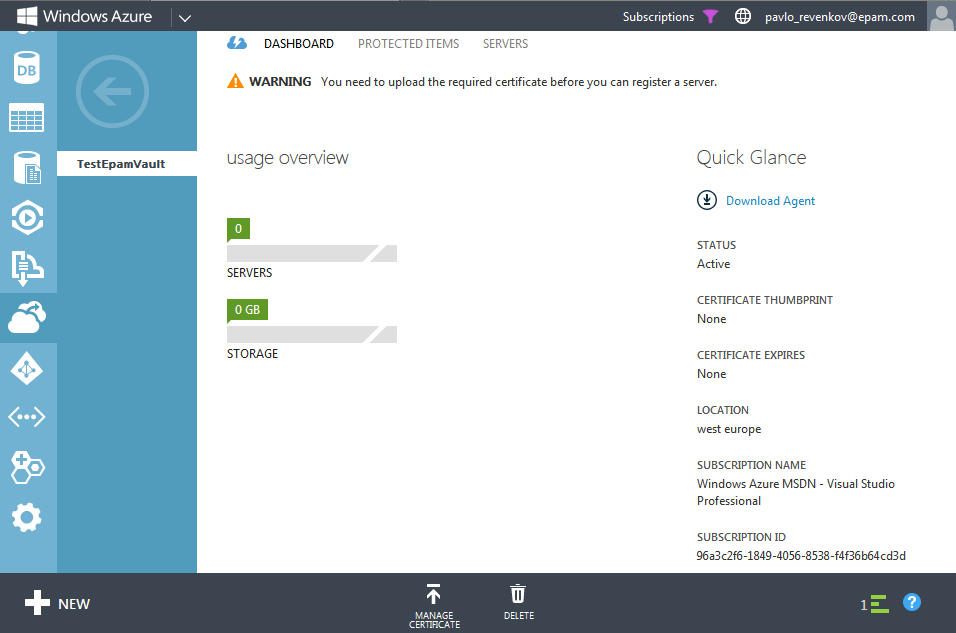
Windows Azure Backup Agent must be installed on machines running Windows Server. Download it by clicking on the “Download Agent” link. In the window that appears, select the option “Agent for Windows Server and System Center”.

Installing Windows Azure Backup Agent is quite simple, so I will not dwell on it. In most cases, leave the default settings.
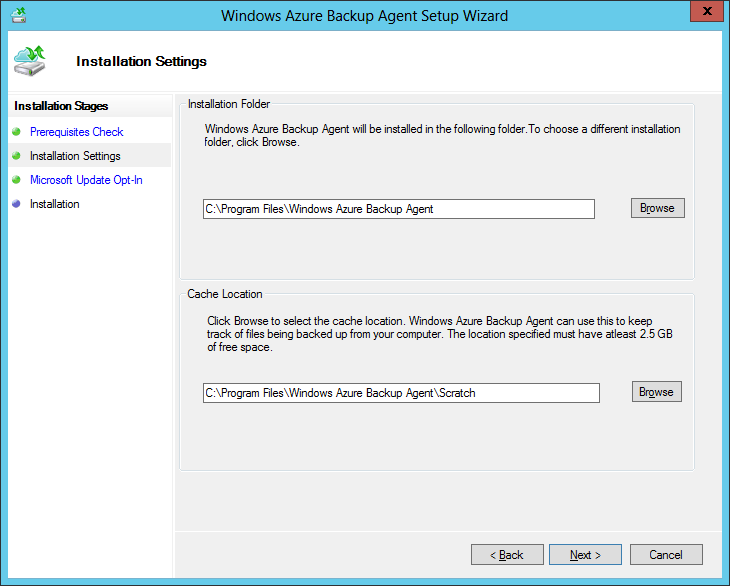
Launch the installed Windows Azure Backup Agent. The first thing we are asked to do immediately after launch is to register the machine on which we are currently working as a server, the data of which will be backed up to Windows Azure. We do this by selecting “Register Server”.

In the server registration wizard, we will be asked to specify a certificate that will be used for authorization in Windows Azure Recovery Services. Since we have already imported the corresponding certificate into the local storage, we will be asked to select it.
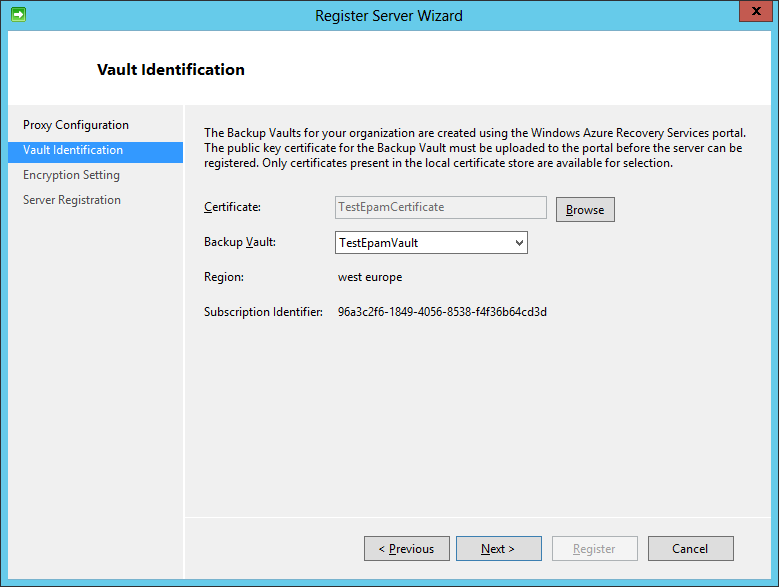

After that, select the available backup vault from the drop-down list.
The last step is to set a password for (races) encrypting backups of this machine. You can create your own (the length must be at least 16 characters), or you can use the generator by clicking the “Generate Passphrase” button.
You must also specify the location of the text file with a password. It is recommended to save it to external media.
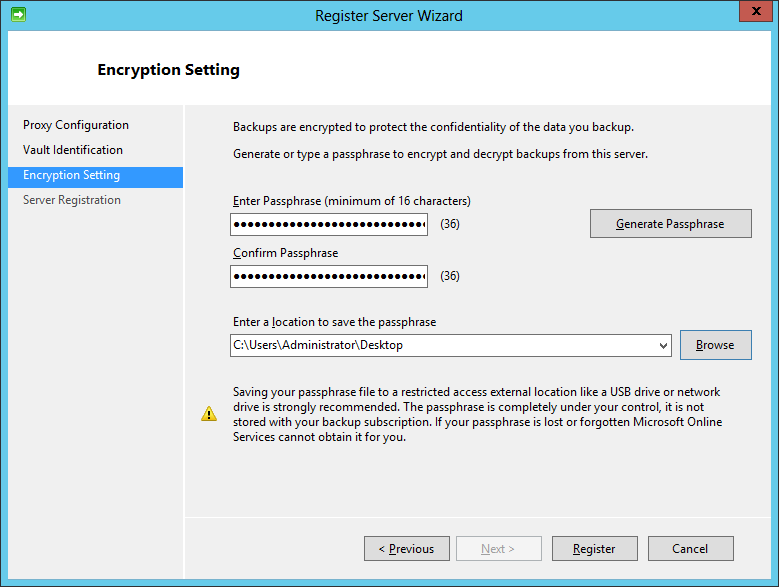
Complete the server registration by clicking the “Register” button.

Before we go directly to setting up the Windows Azure Backup Agent, let's check if our machine appears in the server list in the Windows Azure Management Portal.
Select the created backup storage in the Recovery Services section and go to the “Servers” tab. Your machine should appear in this list.
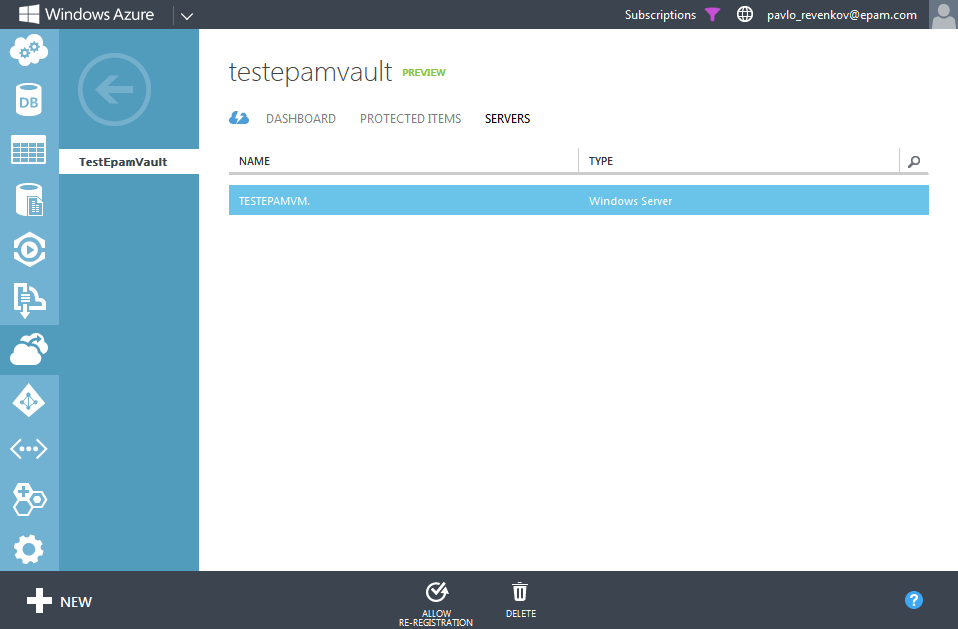
Now back to setting up Windows Azure Backup Agent. After registering the server on the Windows Azure Management Portal, the program window will look like this.
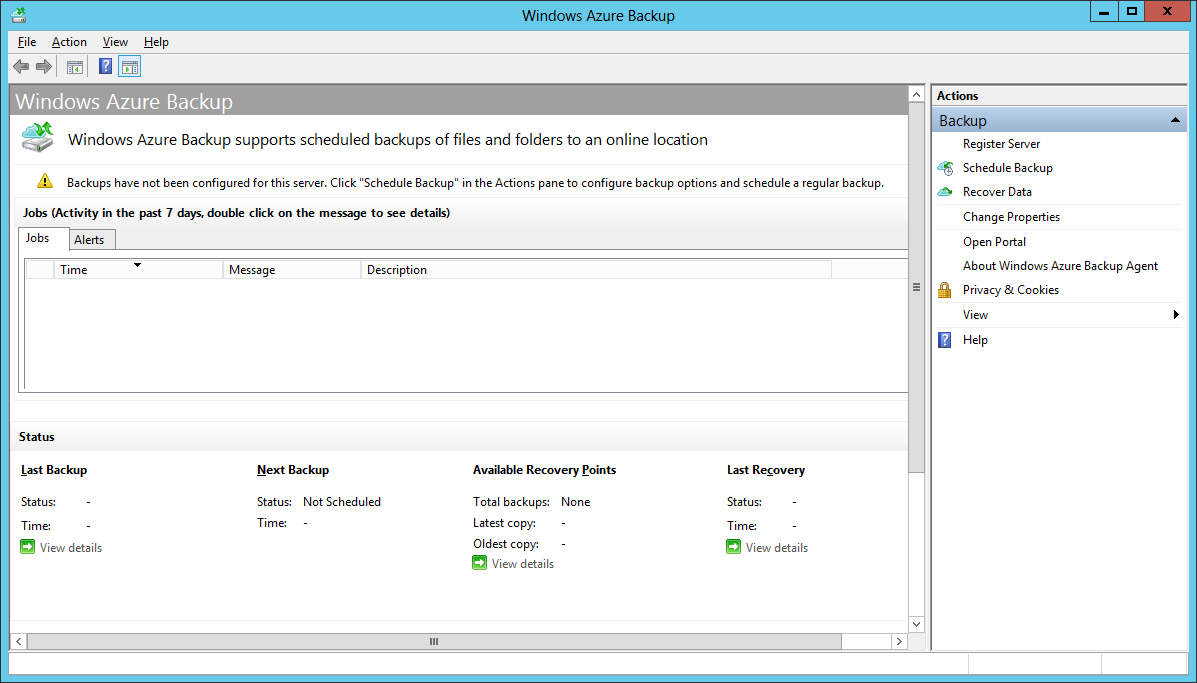
As we can see, we are now invited to create a backup schedule for this server. That is, in fact, Windows Azure Backup Agent is a backup scheduler. Create a new schedule by clicking the “Schedule Backup” button.
Specify the directories in which data should be stored in the cloud. For example, choose the profile of the current user.
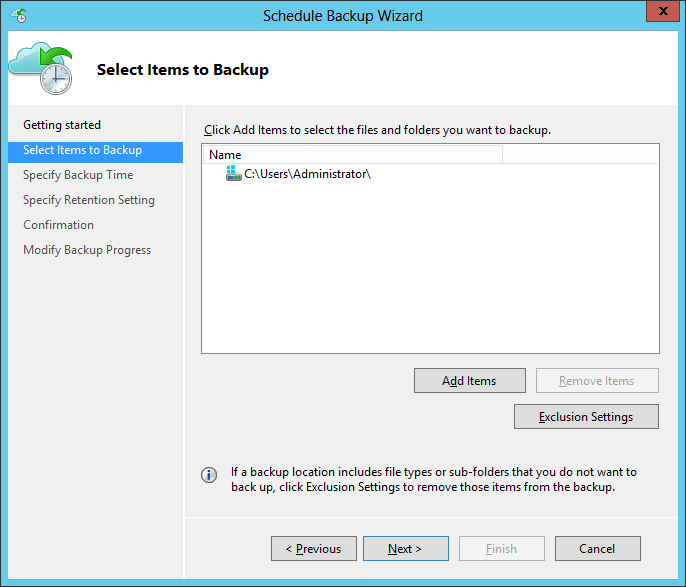
Since the current user profile may contain, in addition to the payload, some unnecessary, for example, files with the .tmp extension, we can indicate to the scheduler that files with this extension should not be taken into account. To do this, click on the “Exclusion Settings” button, specify the same folder that we want to store in the cloud and mark the .tmp extension for ignoring. You also need to set the “Subfolders” parameter to “Yes” in order for the scheduler to use this rule for all subfolders in the root folder.

In the next step we will be asked to indicate the frequency of this assignment. The task itself can be performed no more than 3 times a day.
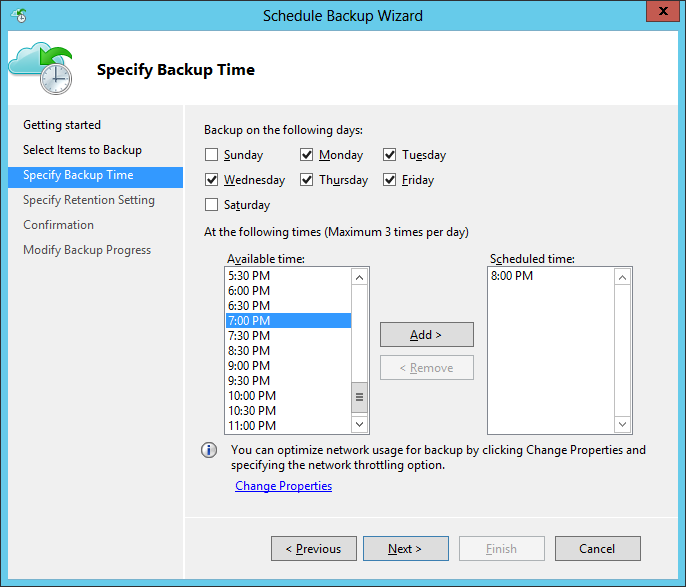
The last step is to specify for how long backups will be stored in the repository. Possible values: for the last 7, 15 and 30 days.
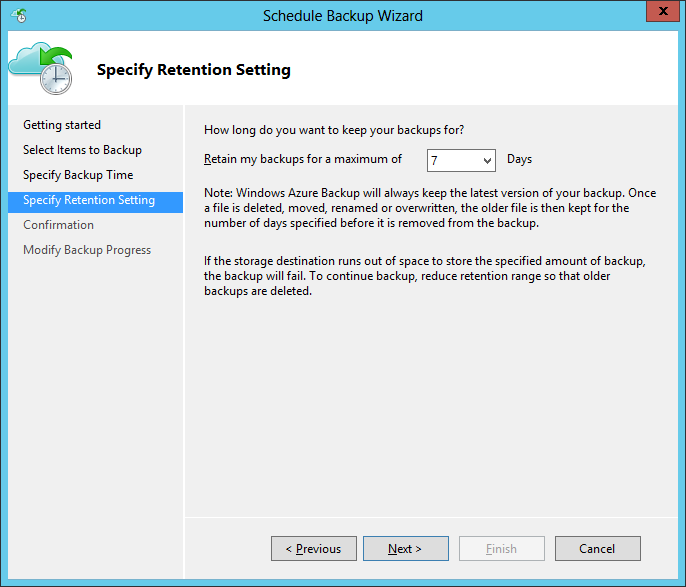
This completes the creation of a schedule for performing data backup operations. You can add additional tasks according to your requirements.
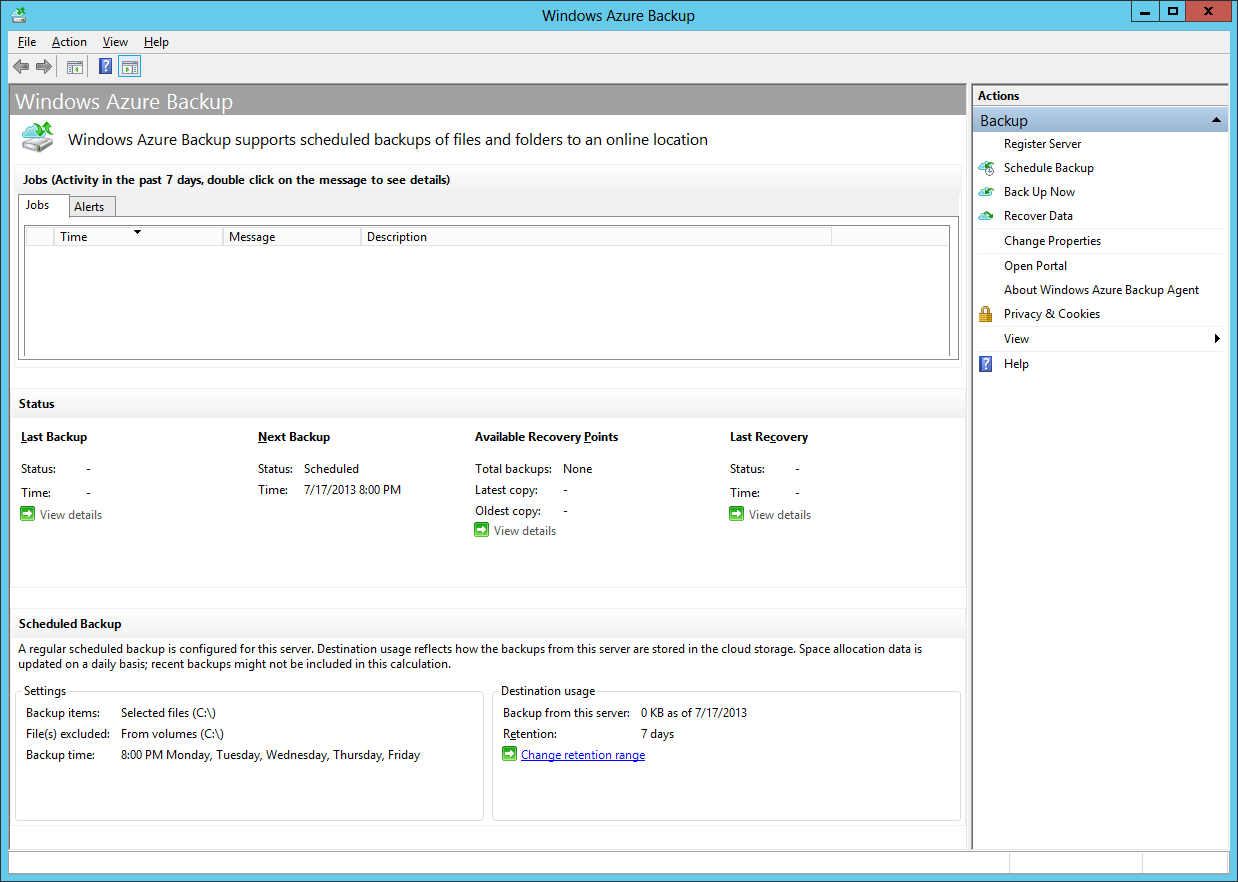
Let's now try to start the backup process manually, without waiting for the timer to work. To do this, select “Back Up Now”.
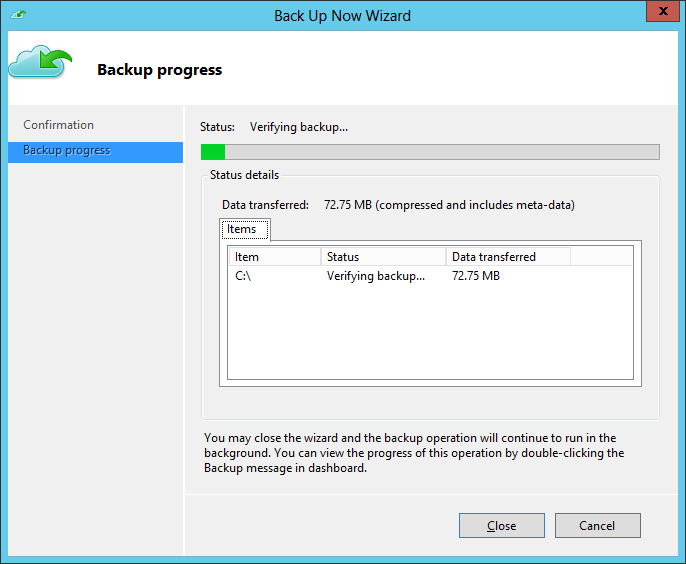
In the window that appears, we can monitor the process of performing backup operations. Since the operation is performed in the background, you can close this window by pressing the “Close” button.
As soon as the process is completed, we will see the completed task in the general list of tasks.

If we return to the Windows Azure Management Portal, the Recovery Services section and select the “Protected Items” tab, we will see a list of directories stored in this repository, information on where they came from and when.
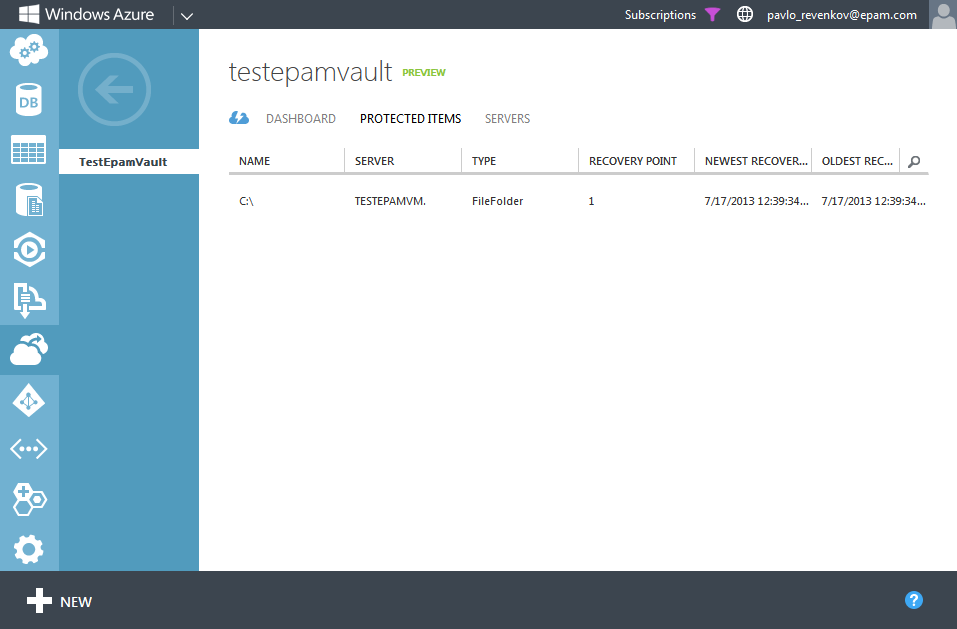
Now let's try to recover data from a repository located in the cloud. To do this, in the Windows Azure Backup Agent window, select “Recover Data”.
At the first step we will be asked to indicate the source of the data that we are going to restore on this computer. In this case, backups were made from the same computer, so it leaves the “This server” option.
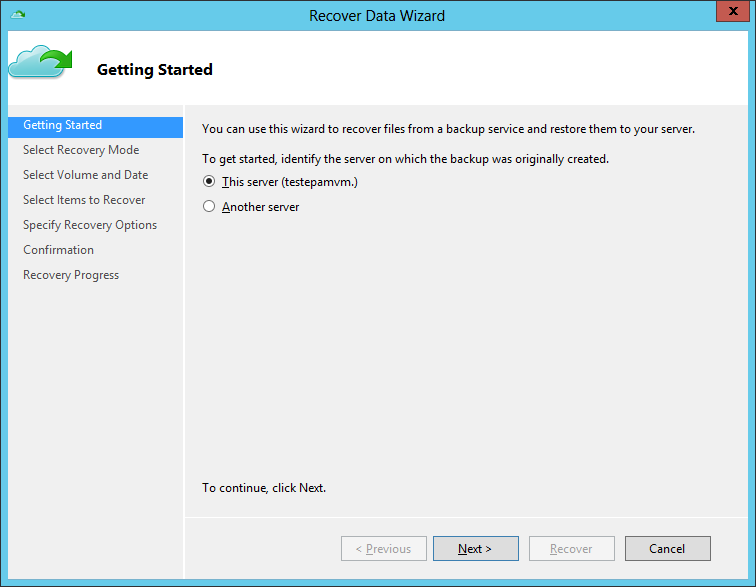
In the next step, we need to select a partition for data recovery, as well as the time when a snapshot of the data was created (in fact, a restore point).
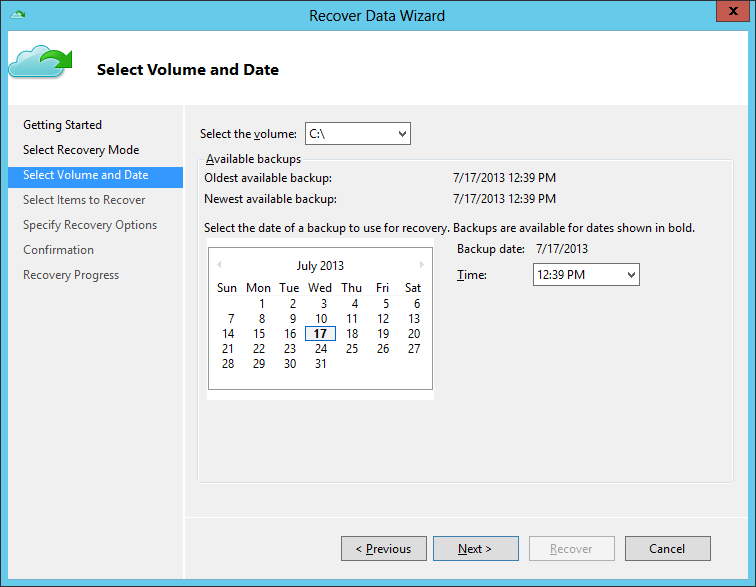
The next step is the direct selection of data for recovery. You can recover both the entire amount of data and individual items.
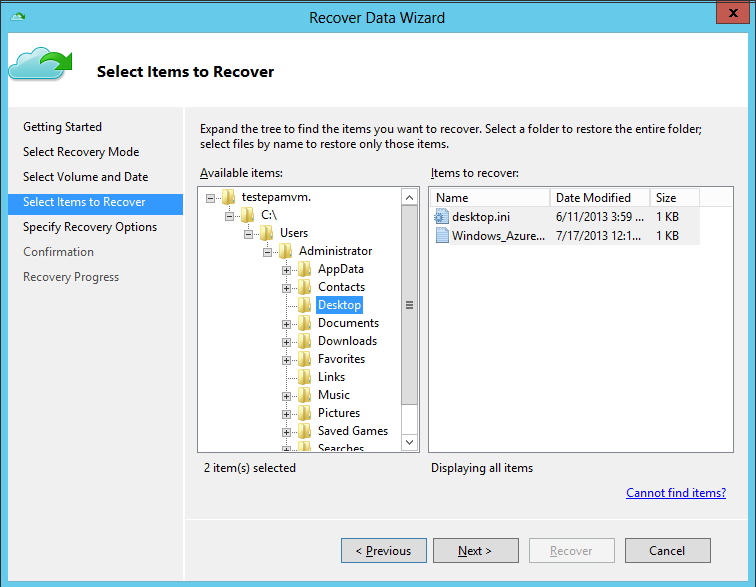
The last step is setting additional recovery options. For example, at this stage we can specify what to do with the files that are already in the recovery directory, and also set the recovery directory. In addition, you can specify whether to restore access rights to files and folders.
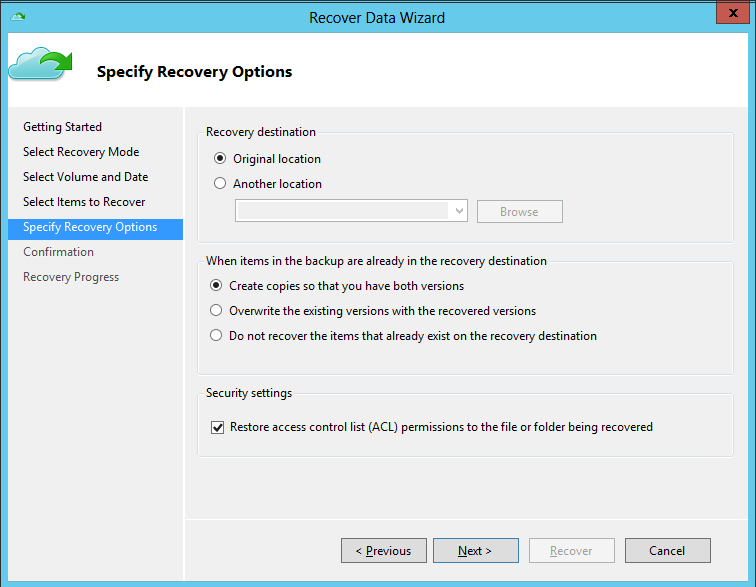
Complete the file recovery by clicking the “Recover” button.
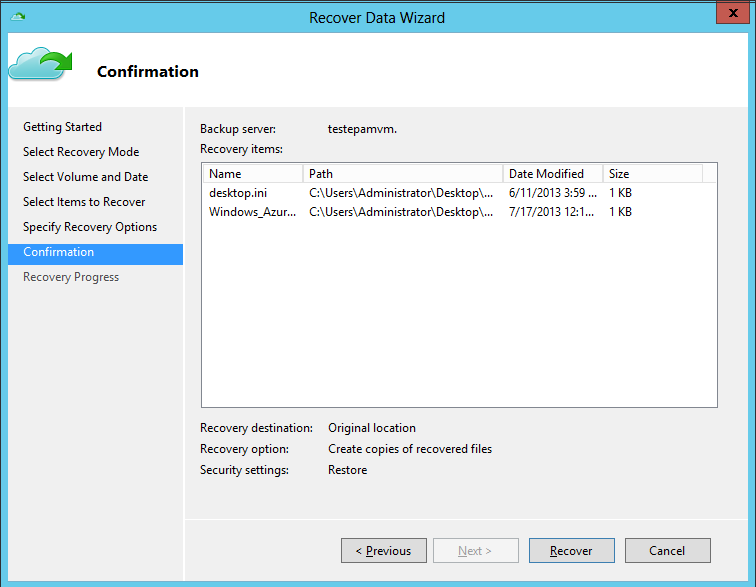
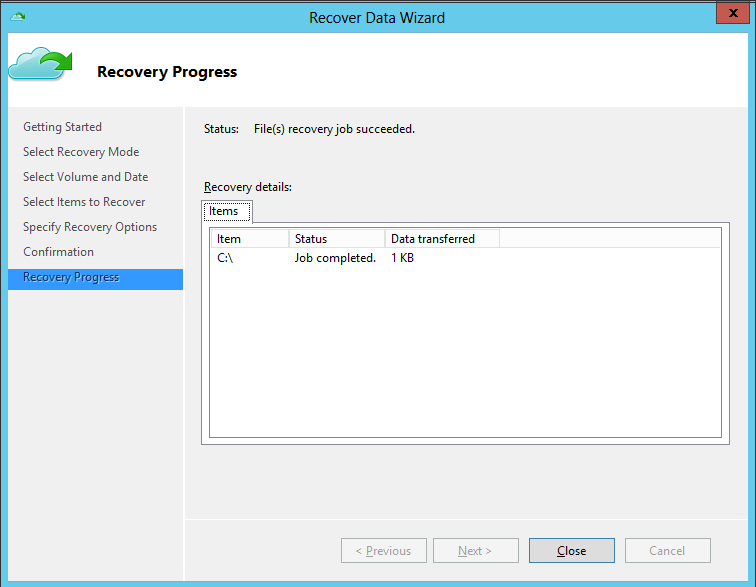
In fact, this is how work with Windows Azure Recovery Services is organized. Of course, we did not consider the possibility of integration with System Center. but this is a topic for a separate article. Thank you all for your attention!
Register a new server
Now that the backup storage has been created, we have created and imported the necessary certificates on the Windows Azure Management Portal and on the Windows Server machines, all we have to do is install the Windows Azure Backup Agent on these machines and configure it accordingly.
Open the Windows Azure Management Portal and go to the Recovery Services section. After that, select the created backup storage and go to the “Dashboard” tab.
')

Windows Azure Backup Agent must be installed on machines running Windows Server. Download it by clicking on the “Download Agent” link. In the window that appears, select the option “Agent for Windows Server and System Center”.

Installing Windows Azure Backup Agent is quite simple, so I will not dwell on it. In most cases, leave the default settings.

Launch the installed Windows Azure Backup Agent. The first thing we are asked to do immediately after launch is to register the machine on which we are currently working as a server, the data of which will be backed up to Windows Azure. We do this by selecting “Register Server”.

In the server registration wizard, we will be asked to specify a certificate that will be used for authorization in Windows Azure Recovery Services. Since we have already imported the corresponding certificate into the local storage, we will be asked to select it.


After that, select the available backup vault from the drop-down list.
The last step is to set a password for (races) encrypting backups of this machine. You can create your own (the length must be at least 16 characters), or you can use the generator by clicking the “Generate Passphrase” button.
You must also specify the location of the text file with a password. It is recommended to save it to external media.

Complete the server registration by clicking the “Register” button.

Before we go directly to setting up the Windows Azure Backup Agent, let's check if our machine appears in the server list in the Windows Azure Management Portal.
Select the created backup storage in the Recovery Services section and go to the “Servers” tab. Your machine should appear in this list.

Creating a backup schedule
Now back to setting up Windows Azure Backup Agent. After registering the server on the Windows Azure Management Portal, the program window will look like this.

As we can see, we are now invited to create a backup schedule for this server. That is, in fact, Windows Azure Backup Agent is a backup scheduler. Create a new schedule by clicking the “Schedule Backup” button.
Specify the directories in which data should be stored in the cloud. For example, choose the profile of the current user.

Since the current user profile may contain, in addition to the payload, some unnecessary, for example, files with the .tmp extension, we can indicate to the scheduler that files with this extension should not be taken into account. To do this, click on the “Exclusion Settings” button, specify the same folder that we want to store in the cloud and mark the .tmp extension for ignoring. You also need to set the “Subfolders” parameter to “Yes” in order for the scheduler to use this rule for all subfolders in the root folder.

In the next step we will be asked to indicate the frequency of this assignment. The task itself can be performed no more than 3 times a day.

The last step is to specify for how long backups will be stored in the repository. Possible values: for the last 7, 15 and 30 days.

This completes the creation of a schedule for performing data backup operations. You can add additional tasks according to your requirements.

Let's now try to start the backup process manually, without waiting for the timer to work. To do this, select “Back Up Now”.

In the window that appears, we can monitor the process of performing backup operations. Since the operation is performed in the background, you can close this window by pressing the “Close” button.
As soon as the process is completed, we will see the completed task in the general list of tasks.

If we return to the Windows Azure Management Portal, the Recovery Services section and select the “Protected Items” tab, we will see a list of directories stored in this repository, information on where they came from and when.

Data recovery
Now let's try to recover data from a repository located in the cloud. To do this, in the Windows Azure Backup Agent window, select “Recover Data”.
At the first step we will be asked to indicate the source of the data that we are going to restore on this computer. In this case, backups were made from the same computer, so it leaves the “This server” option.

In the next step, we need to select a partition for data recovery, as well as the time when a snapshot of the data was created (in fact, a restore point).

The next step is the direct selection of data for recovery. You can recover both the entire amount of data and individual items.

The last step is setting additional recovery options. For example, at this stage we can specify what to do with the files that are already in the recovery directory, and also set the recovery directory. In addition, you can specify whether to restore access rights to files and folders.

Complete the file recovery by clicking the “Recover” button.


In fact, this is how work with Windows Azure Recovery Services is organized. Of course, we did not consider the possibility of integration with System Center. but this is a topic for a separate article. Thank you all for your attention!
Source: https://habr.com/ru/post/187518/
All Articles